Myths about teaching can hold you back
- Year 11
- Edexcel
- Foundation
Scale diagrams for converging lenses
I can describe uses of converging lenses and draw scale ray diagrams to determine the position of an image.
- Year 11
- Edexcel
- Foundation
Scale diagrams for converging lenses
I can describe uses of converging lenses and draw scale ray diagrams to determine the position of an image.
These resources will be removed by end of Summer Term 2025.
Switch to our new teaching resources now - designed by teachers and leading subject experts, and tested in classrooms.
These resources were created for remote use during the pandemic and are not designed for classroom teaching.
Lesson details
Key learning points
- In cameras and the human eye, the required image distance < the object distance. The image is diminished and inverted.
- In projectors, the required image distance > the object distance. The image is magnified and inverted.
- A ray incident on a converging lens parallel to the principal axis is refracted to pass through principal focus.
- A ray incident on the centre of a converging lens is not refracted.
- A ray incident on a converging lens from the principal focus is refracted so it becomes parallel to the principal axis.
Keywords
Object distance - The object distance is the distance between an object and a lens.
Image distance - The image distance is the distance between a lens and an image formed by that lens.
Principal focus - The principal focus is the point to which parallel rays (from distant objects) are focused.
Focal length - The focal length is the distance between the centre of a lens and the principal focus.
Principal axis - The principal axis is a line through the centre of a lens, 90° to the optical axis of the lens.
Common misconception
Covering over half of a lens will block out rays of light from half the object and the image will appear cut in half.
Talk about many rays of light passing through the lens from each point of the object and show pupils that blocking half the lens keeps the same image, only less bright.
To help you plan your year 11 physics lesson on: Scale diagrams for converging lenses, download all teaching resources for free and adapt to suit your pupils' needs...
To help you plan your year 11 physics lesson on: Scale diagrams for converging lenses, download all teaching resources for free and adapt to suit your pupils' needs.
The starter quiz will activate and check your pupils' prior knowledge, with versions available both with and without answers in PDF format.
We use learning cycles to break down learning into key concepts or ideas linked to the learning outcome. Each learning cycle features explanations with checks for understanding and practice tasks with feedback. All of this is found in our slide decks, ready for you to download and edit. The practice tasks are also available as printable worksheets and some lessons have additional materials with extra material you might need for teaching the lesson.
The assessment exit quiz will test your pupils' understanding of the key learning points.
Our video is a tool for planning, showing how other teachers might teach the lesson, offering helpful tips, modelled explanations and inspiration for your own delivery in the classroom. Plus, you can set it as homework or revision for pupils and keep their learning on track by sharing an online pupil version of this lesson.
Explore more key stage 4 physics lessons from the Electromagnetic waves unit, dive into the full secondary physics curriculum, or learn more about lesson planning.

Licence
Prior knowledge starter quiz
6 Questions
Q1.A lens that bends light rays towards each other so that they meet or cross is called a lens.
Q2.A student wants to use a lens to create an image on a screen.
At which position should the student place the screen to see a sharp image?

Q3.The diagram shows light rays being focused by a lens.
What are the correct names for the distance labelled A, the point labelled B and the line labelled C?
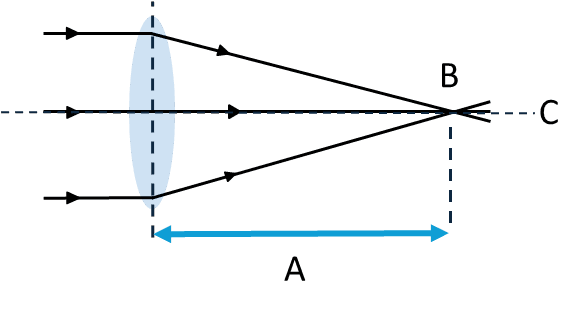
focal length
principal focus
principal axis
Q4.Which of these words can be used to describe images made on screens by lenses?
Q5.The diagrams show parallel light rays being brought to a focus by three different lenses, labelled P, Q and R. Lenses P and Q have the same curvature.
Which of these statements must be correct?
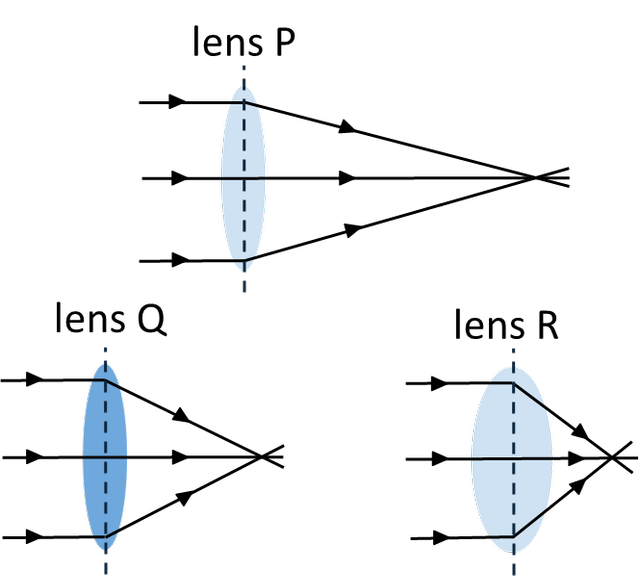
Q6.A student uses a lens to make a sharp (clear) image of an object on a screen.
Which of these statements must be correct?
Assessment exit quiz
6 Questions
Q1.Which of these statements are correct about rays of light that hit a lens?
Q2.This scale ray diagram shows an object (an arrow), a converging lens and an image.
Which of these words describe the image?
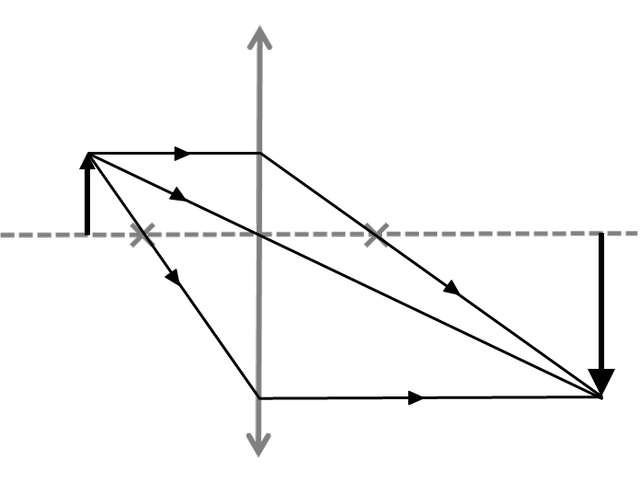
Q3.Which of these statements describe the image distance when a lens forms an image on a screen?
Q4.The diagram shows rays of light from an object entering an eye through its lens. The rays are focused onto the back of the eye which acts as a screen.
How does the eye focus on a more distant object?
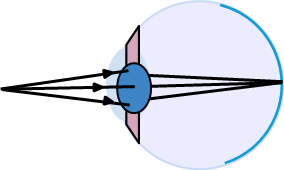
Q5.In this ray diagram, the principal focus on each side of the lens is shown as a cross. Three rays from the top of the object (an arrow) are shown.
Match each ray with its description.
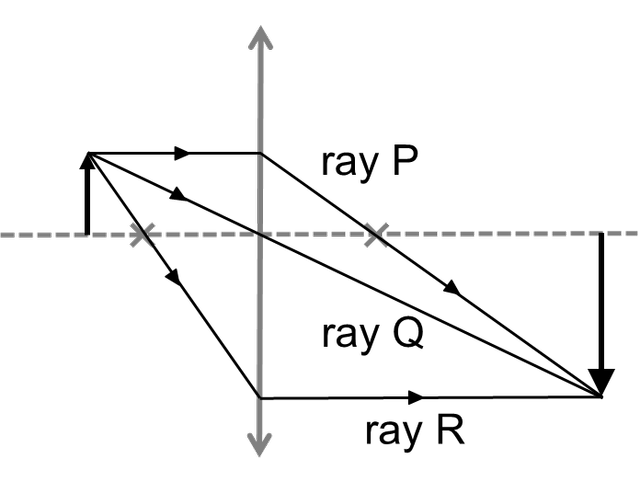
parallel to principal axis, then bends to pass through principal focus
passes through centre of lens without being refracted
passes through principal focus, then bends parallel to principal axis


